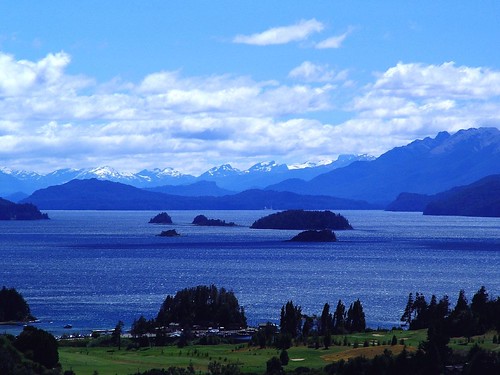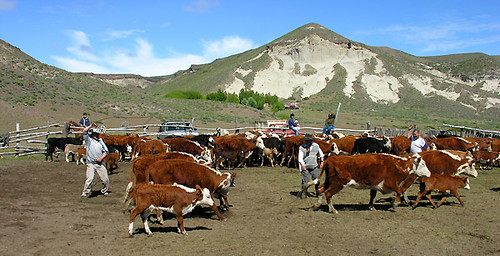
Black River to Argentina
Right in the Black River valley, which has the mightiest watercourse of Patagonia, is made floating and kayaking to watch this beautiful oasis fruit and rich bird life. Where thousands and thousands of tourists come every year.
The Black River Valley High is an important fruit production area that supplies, for over 50 years, both domestic and international levels. It lies between the cities and Cipolletti Chichinales is full of farms and hidden behind rows and rows of poplar trees that protect the richest pears, apples and peaches. Here the landscape is the result of the combination between nature and human labor by crop and irrigation canals. And it is no coincidence that one of the most widely used is the farm, ie, walks and hikes to visit farms and vineyards specialized in «wine of cold spots,» such as classical Canale Winery. There is also the possibility of living the valley from the river itself by kayaking with a view of the fauna included. This experience allows us to appreciate the great contrast between the area cultivated with fruit trees, the arid Patagonian plateau and its characteristic flora.

Black River Source:
Its name, «Black River» is the literal translation of «Curru Leuvú» a term used by the original inhabitants of the area despite the fact that its waters are not that color but green. This river is one of the most important waterways of Patagonia and gives its name to the province that is home from its source to its mouth. Born in the confluence of the rivers Neuquén and Limay and traverses 750 km without receiving a single tributary but has lots of river meanders and islands. The largest and most important is the Choel Choele in the Middle Valley. Eventually empties into the Atlantic Ocean, 30 kilometers south of Viedma, capital of the province. Throughout his extensive journey flowing between the walls (terraces) that form the Patagonian plateau in the midst of a fertile valley wide and densely populated.
Some historical records say that the Spanish were many willows along its shores who named it Rio de los Sauces. Also were so impressed to see his bar that fell to a port farther south and concluded that it was impossible to get there. However, the Royal Navy pilot, Basilio Villarino proved otherwise in 1782 and 1783. Once past the mouth of dangerous waters and was traced to an area just above the confluence with the Limay River Collon Cura. Half a century later, in 1833, a schooner under the command of Nicolas Descalzi virtually unknown ascended the river and made a sketch to the area of the island of Choele Choel. Time went by and the idea of continuing exploration of the great river was forgotten until, in 1869, the government requested subsequent examinations. Fifteen years later, the commander Erasmo Forced determined with relative accuracy the seaworthiness of the river and closed the period of exploration.
Deep waters:
The Black River is the mightiest watercourse in Patagonia and one of the five largest rivers in the country. However, its waters are usually calm and ideal for nautical activities sailing, motor or rowing. The locals tend to enjoy this oasis in the middle of the plateau by going to the various local resorts and sports clubs that are on the banks of river. Meanwhile, fishing enthusiasts can try hunting outlets for rainbow trout, perch and Patagonian silverside.
The types of birds can be observed over a raft floating in change according to local conditions which, in turn, vary depending on which side of the river is. At the margins, where the soil is sandy loam, vegetation is usually represented by willows and olivillos. These gallery forests are the ideal haven for birds like the wood pigeon, the carpenter bataraz boy, the woodpecker, parrots, and heron Thrush. In contrast, in areas where water remains much of the year and generated saturated soil environments where they develop swampy streams. Here are dwelling species such as bulrushes, redfish, the pullets, the varilleros and coots. And where the surface tends to be rocky or mountain shrub steppe dominate the landscape with species fully adapted to extreme desert conditions as the red falcon, the black vulture and the vulture head red head. Finally we say that the site are advised to take insect repellent, comfortable shoes (and that can get wet), clothing, towels, antiallergic and binoculars.

Black River is a place for aventure sports!
Leave a Reply
You must be logged in to post a comment.
Recent Comments